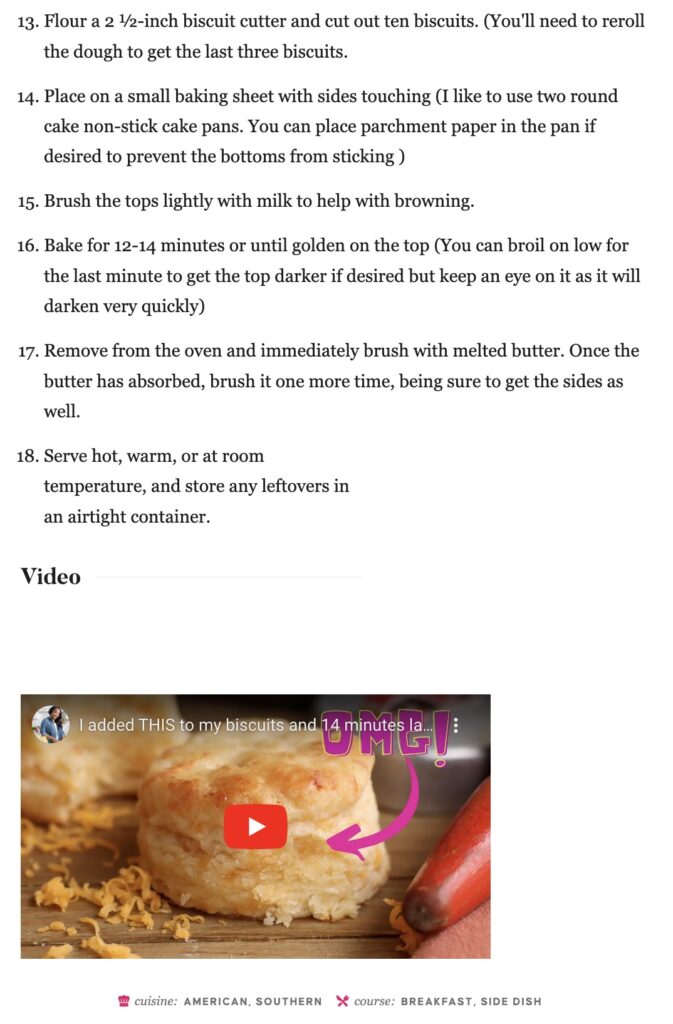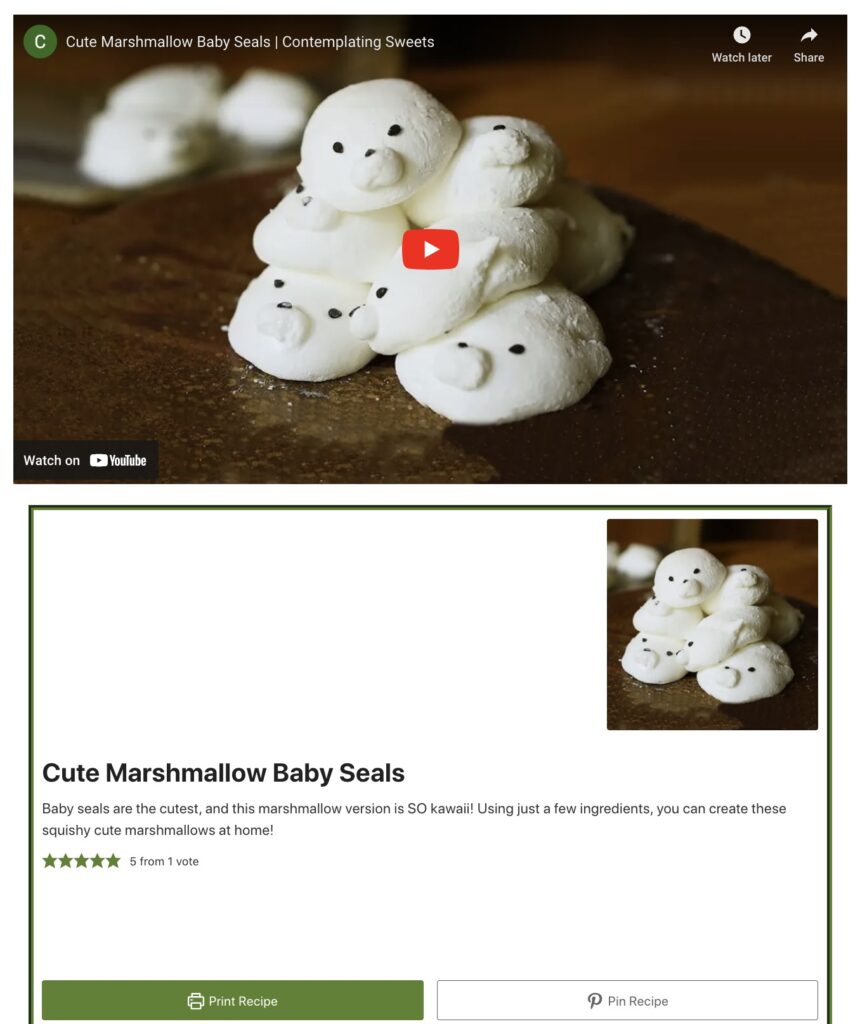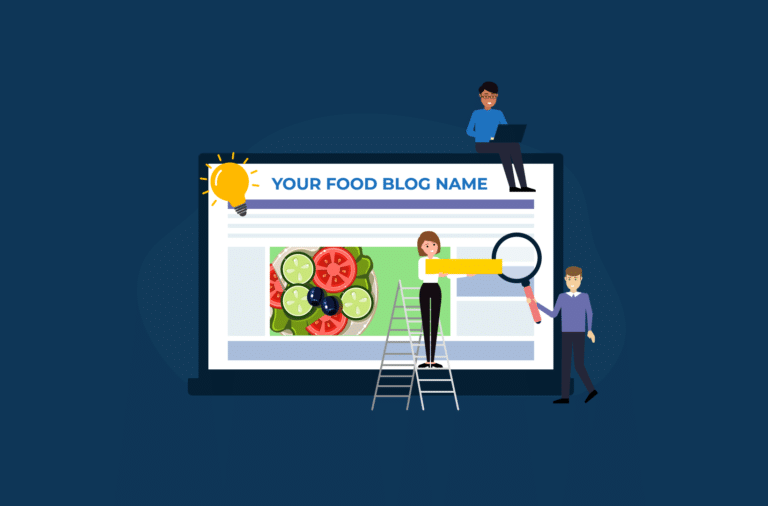Are you thinking of starting a cooking channel on YouTube?
YouTube is a wonderful space for thousands of chefs, foodies, and home cooks who want to share their recipes with the world. There are a lot of benefits to starting a YouTube channel, whether you plan on putting your full focus into the platform or you want your cooking channel to drive traffic to your food blog or food-related business. With the right approach, YouTube can help you connect with your audience, increase your brand visibility, and even generate revenue.
Starting a cooking channel on YouTube is certainly doable but it will take time and effort if you want to do it properly and stand a chance of getting noticed amongst the thousands of other food YouTubers who enjoy an audience on the platform. There are so many factors to consider even before you upload your first video, from picking a niche to choosing the right equipment to creating engaging and high-quality content.
In this post, we’ll explore how you can start a food channel on YouTube and what steps you need to take to make it successful!
Why Should You Start a Cooking Channel on YouTube?
If you want to see any level of success on YouTube, then you’ll need to be committed to uploading recipe videos frequently. You’ll need to pay attention to the best keyword strategies for your videos and promote your uploaded videos in any way you can. However, while becoming a YouTuber is not necessarily easy work, it can be very rewarding.
Everyone will have their own motivations for starting a YouTube channel, and here are the top reasons for doing so:
- It helps you connect with your audience. People who watch online cooking classes are usually looking for recipes and tips on how to cook certain dishes. By creating videos on different recipes, you can help them find what they’re looking for!
- It helps you grow your brand. If you have other projects like a food blog or recipe app, having a popular cooking channel will help promote them by giving viewers an idea of what they’re about and what kind of content they contain. This will help you gain more followers who might be interested in paying for your own products or gaining access to exclusive content!
- You can also make money from your YouTube channel alone. Once you build up a large viewership over time, you have the opportunity to make an income through ad revenue, channel memberships, or YouTube Premium revenue.
How Do I Start a Cooking Channel on YouTube?
Starting a cooking channel is exciting, but there are a lot of moving parts to it. In this guide, we break down the process into four easy-to-follow stages.
Stage 1: Research
With any project, thorough research is the first step to long-term success. You don’t want to rush in blindly and start creating videos with no plan, as you won’t reap the maximum benefit. It’s best to do some investigating and figure out what works well and what doesn’t. You can then build a plan around your findings that will guide you along the way.
Define Your Audience
It is incredibly important to define your target audience before you do anything else. Who are your videos aimed at? Thinking about your audience too broadly is generally a bad idea, as it’s better to have a smaller, engaged audience than a large, indifferent one. Identifying your audience will keep you focused on planning and creating content that is relevant and likely to be a hit.
You’ll need to think about a wide range of demographic information, including factors such as age, gender, location, income, and dietary restriction. This info will help you to create a profile of your ideal viewer, which will shape all your future content. For example, if you are targeting young people in full-time education, you will want to focus on budget-friendly options with widely available ingredients.
Think about the size of each audience as well. There are a lot more younger people watching YouTube videos than older generations. In fact, targeting millennials is a particularly good choice for a YouTube cooking channel because they watch 30% more food content on YouTube than other demographics.
Create a Niche
Once you have defined your audience, you should start to figure out your niche and your unique selling point (USP) that makes your channel stand out from the competition. There are many food bloggers and YouTubers out there, so if you are too generic you will just blend into the background. You want to come out with a focus that differentiates your channel from the others.
Your choice should reflect your interests and skill set. For example, if you’re highly skilled at making hyper-realistic cakes, this could be the focal point of your channel. If you’re a beginner looking to record your cooking journey from zero to hero, a food vlogging channel may be the right route for you. Or perhaps you want to opt for something more informative, such as digging into the science behind cooking processes.
Once you have found your niche, this should inform all aspects of your channel and brand, including your channel’s name and the videos you produce.
Watch Other Successful YouTube Channels
One of the best ways to prepare yourself for creating a successful cooking channel is to take a look at the competition. Research successful cooking channels to see what else is out there and how the best YouTubers are doing it. This will give you a sense of what content performs well and what doesn’t. You can also get inspiration for recipes, cooking trends, and creative ways in which to shoot your video.
Here are a few examples of successful YouTube cooking channels, all of which have millions of subscribers:
- A Cook Named Matt posts short, punchy videos with seasonal and trendy recipes.

- CookingBomb is an engaging food YouTuber who specializes in complex Chinese recipes.
- Jamie Oliver is a renowned chef who shares accessible recipes that anyone can make. His channel supports his existing brand as a chef, restaurant owner, TV food show presenter, and cookbook author.
Find Your Recipes
What recipes are you going to demonstrate on your cooking channel? You’ll need to post content regularly in order to maintain an engaged audience, so should build a backlog of recipes before starting.
You may have several recipes up your sleeve already, which is a great place to start. But if you need more inspiration, you can find plenty of excellent ideas in cookbooks, food blogs, TV shows, Instagram food accounts, or other YouTube cooking channels. You should aim to be original so you don’t want to plagiarize everything you find. It’s a good idea to adapt the recipes you find and put your own unique spin on them.
Check out our article about how to source recipes to help grow your YouTube cooking channel!
Stage 2: Preparation for Your First Cooking Video
The time has come to prepare your first cooking video! But before you jump straight into filming, here are some of the measures you’ll need to follow:
Create a Schedule
It’s important to post content regularly, as this will keep your viewers engaged and will help your videos rank higher in the YouTube search results. Creating a posting schedule helps you keep on track, as well as organize your recipes in a clear and practical way. For example, you could create a number of different cooking series, in which videos are linked by categories, such as vegetarian dishes, gluten-free recipes, and more.
Your schedule will also allow you to plan ahead for seasonal content, such as summer BBQ, Christmas, and Thanksgiving recipes.
Work on Perfecting Your Cooking Skills
Do a practice run of your chosen recipe at least once before filming. This will make you more confident in your presentation and reduce the likelihood of mistakes. Remember to focus on the presentation of the food, since YouTube is a visual medium and viewers will be expecting something that looks delicious and beautiful.
Source the Right Equipment
Filming recipe videos requires a great deal of equipment, including:
Cooking equipment: If you love cooking, you probably already have most of the cooking equipment you need to get started. But for aesthetic reasons, you don’t want to be using a lot of ancient, mismatched utensils. Your cooking equipment should generally be uniform and match your branding.
Filming equipment: You don’t need a huge amount of filming equipment to get started, but it’s important to ensure you have the right kit for your preferred setup. This may include:
- A good quality camera. This can either be a dedicated camera or a smartphone, depending on your preference and budget.
- A tripod to steady and frame shots.
- A lightbox or reflector if you don’t have access to good natural light.
- A microphone for good audio quality.
Backdrop and props: The background aesthetics of your videos are just as important as how the final dish looks. The props and background you choose should reflect your brand. Unless you are filing specific outdoor recipes such as BBQs, you will most likely film in your kitchen. But it needs to look clean and attractive. You can incorporate all kinds of props in your shot, such as wooden boards, plates, glassware, and background ingredients.
Stage 3: Creating Your First Cooking Video
Your first cooking video won’t be your best. It might not even be great. But the more you keep at it, the better you’ll get! Don’t hold back from uploading your first videos, as you’ll need to start getting content out there to build your content.
Don’t Be Afraid to Mess Up
Filming your first video may feel a little strange, and you shouldn’t expect to get it perfect the first time. You will become more confident as you go on. Here are a few tips to help you feel more comfortable in front of the camera:
- Be yourself. Authenticity is key to building a successful channel.
- Practice makes perfect. The more videos you create, the better they will become.
- Doing a practice run before shooting each video.
- Remember, you can always edit if things don’t go to plan.
Get Your Shots
If all of your videos feature a single shot of you cooking, viewers are more likely to get bored. You should incorporate a range of different shots and techniques. For example, it’s good to use birds-eye views when focusing on the food and wide shots when you are talking about techniques.
Make It Appealing
It’s essential you make your food look as mouth-watering as possible through careful presentation and camera framing. You can also delight your viewers’ senses by capturing noises such as sizzling, crunching, and crackling.
Edit Your Videos
After filming, you will need to edit your video to ensure it is concise and entertaining. You’ll need to cut out any unnecessary parts, such as waiting for vegetables to boil or any slip-ups you may have made. Consider whether you want to add any elements like subtitles, voiceovers, on-screen text, or background music.
There are lots of user-friendly video editing software and apps you can use, such as iMovie or Adobe Premiere for computers and Canva, Vimeo, and InShot for smartphones.
For more editing advice, here is an excellent in-depth step-by-step guide to making cooking videos at home.
Stage 4: How to Grow Your Channel
Growing your channel takes time, but there’s a lot you can do to push the algorithm in your favor! Follow our steps below to set the right goalposts, and you’ll slowly but surely build your audience.
Interact With Your Audience
Don’t just post videos and leave them there. Engaging with your audience is key to building a larger following and encouraging more engagement in the future. Make sure you reply to comments or mention specific users in your videos when you use their suggestions or answer questions. You could also live stream, run competitions and giveaways, or collaborate with other YouTube content creators who have a similar target demographic.
Monetize Your Content
If you wish to create cooking content full-time and generate income from your channel, it’s important to focus on monetizing your food content. You can do this through a variety of ways, including affiliate marketing, sponsored content, and joining YouTube’s Partner Program. To join YouTube’s Partner program, you’ll need over 1000 subscribers, have over 4000 valid public watch hours in the last 12 months, and at least 10 million valid public Shorts views in the past 90 days. The more successful your channel is, the more options there will be to make revenue.
Collaborate With Other YouTube Food Channels
Collaborating with other YouTube food channels offers numerous advantages for growing your own channel. By collaborating, you can tap into the existing audience of the other channels, potentially exposing your content to new viewers.
Cross-promotion between collaborating channels helps drive traffic and subscribers to both parties. Additionally, collaborating brings variety and fresh perspectives to your content, keeping your audience engaged. Building relationships within the YouTube community through collaborations opens doors to future opportunities and partnerships.
Monitor Your Data
One of the best features of YouTube is the vast array of analytics it provides to users. Monitoring your stats is incredibly important, as it identifies areas for improvement and helps you optimize your content.
There are lots of stats you be tracking, including:
- Watch Time, which indicates how engaging your content is
- Average Percentage Viewed, which indicates how much of your video people are actually watching
- Audience Retention, which indicates how well you’re building loyalty
- Rewatches, which indicate if people are actually invested in your recipes
Tracking these stats over time will enable you to identify where you can improve and adapt your approach accordingly.
Become a Multi-Channel Influencer
Most successful food YouTubers will share their cooking content on multiple social media platforms. Becoming a food influencer will enable you to reach a wider audience who may not be active on YouTube. Each social platform has its own benefits. For example, Instagram is great for live streaming and posting sponsored content, while TikTok is perfect for short, punchy recipe videos.
Email is another important channel, as it allows you to keep your audience engaged and send personalized content, as well as updates on any projects you have in the pipeline. You should also have a website that serves as a base for all your content, such as recipes, products, and video tutorials.
Having a food blog on your website can be incredibly beneficial, as it allows your audience to find and recreate your recipes without having to rewatch your videos continually. If you want to create a food blog on WordPress, then you’ll want to take it to the next level using WP Recipe Maker.
WP Recipe Maker is a recipe plugin for WordPress that allows you to create and add recipe cards to your blog posts and pages with automatic metadata, which keeps them organized. Your recipe cards are totally customizable since you can build on templates using the Template Editor. It’s easy to add nutritional information, step-by-step guides in your recipes, and ingredient and equipment links, and you can also allow visitors to adjust the serving sizes to suit their own needs.
Additionally, you can also easily embed your YouTube videos into your recipes using WP Recipe Maker! This makes your recipe cards even more visually appealing and easier to follow and makes it possible for your readers to follow your recipe videos even if they haven’t landed on your YouTube channel.
How to Embed YouTube Cooking Videos Into Your Recipes With WP Recipe Maker
WP Recipe Maker is a fantastic tool that makes it easy to embed YouTube video content anywhere in your blog. It’s perfect for posting cooking videos alongside the written recipe. The YouTube video can sit inside the recipe box or outside of it – it’s up to you.
As well as YouTube videos, WP Recipe Maker also supports Vimeo, Mediavine, and AdThrive (or any other platform that offers an embed code). You can embed your video by going to the media section of your WordPress site and pasting a link or the embed code to your YouTube video. Using the YouTube Data API, WP Recipe Maker then automatically retrieves the video markup, adding it to your recipe metadata, optimizing your site for SEO, and helping it to rank higher in the search engine results page.
FAQs
How much time do I need to dedicate to my YouTube cooking channel?
The time commitment required for your YouTube cooking channel can vary depending on factors such as your content strategy, production quality, and goals. Generally, creating high-quality cooking content involves tasks like recipe planning, ingredient preparation, filming, editing, and promotion.
You’ll need to allocate time for brainstorming recipe ideas, scripting or outlining videos, sourcing ingredients, filming cooking demonstrations, editing footage, creating thumbnails, writing video descriptions, and engaging with your audience through comments and social media. Additionally, consistency is key on YouTube, so you’ll want to establish a regular upload schedule and dedicate time to filming and editing videos accordingly.
Depending on your goals and the complexity of your content, you may need to devote several hours per week or even more to maintain a successful YouTube cooking channel.
How long does it take to grow a YouTube cooking channel?
The time it takes to grow a YouTube cooking channel can vary significantly depending on various factors, including niche, content quality, consistency, audience engagement, and marketing efforts.
YouTube channels usually undergo an S-shaped growth curve, meaning growth often starts off slow before picking up pace. While there is no guaranteed timeline for channel growth, staying committed to creating valuable content and adapting strategies based on audience feedback and analytics can help accelerate the growth process over time.
Ready to Start Your Cooking Channel on YouTube?
In summary, starting your own YouTube cooking channel has so many benefits. You can make money, build your brand, and promote your food-related projects and businesses. Creating a successful channel takes a lot of work, but with the right preparation, equipment, and video production techniques, you will hit the ground running and grow your audience.
Remember that it’s important to incorporate other channels into your growth strategy, and a food blog is particularly useful. If you’re running a food blog on WordPress, the WP Recipe Maker plugin will be an invaluable tool in your arsenal, as it will help you create stunning recipe cards on your website. You can also embed your YouTube videos in your recipe cards, which is really useful as it will make your recipe cards even more engaging and ensures you’re truly getting the most out of your videos!












I would love to start a YouTube Cooking Channel.